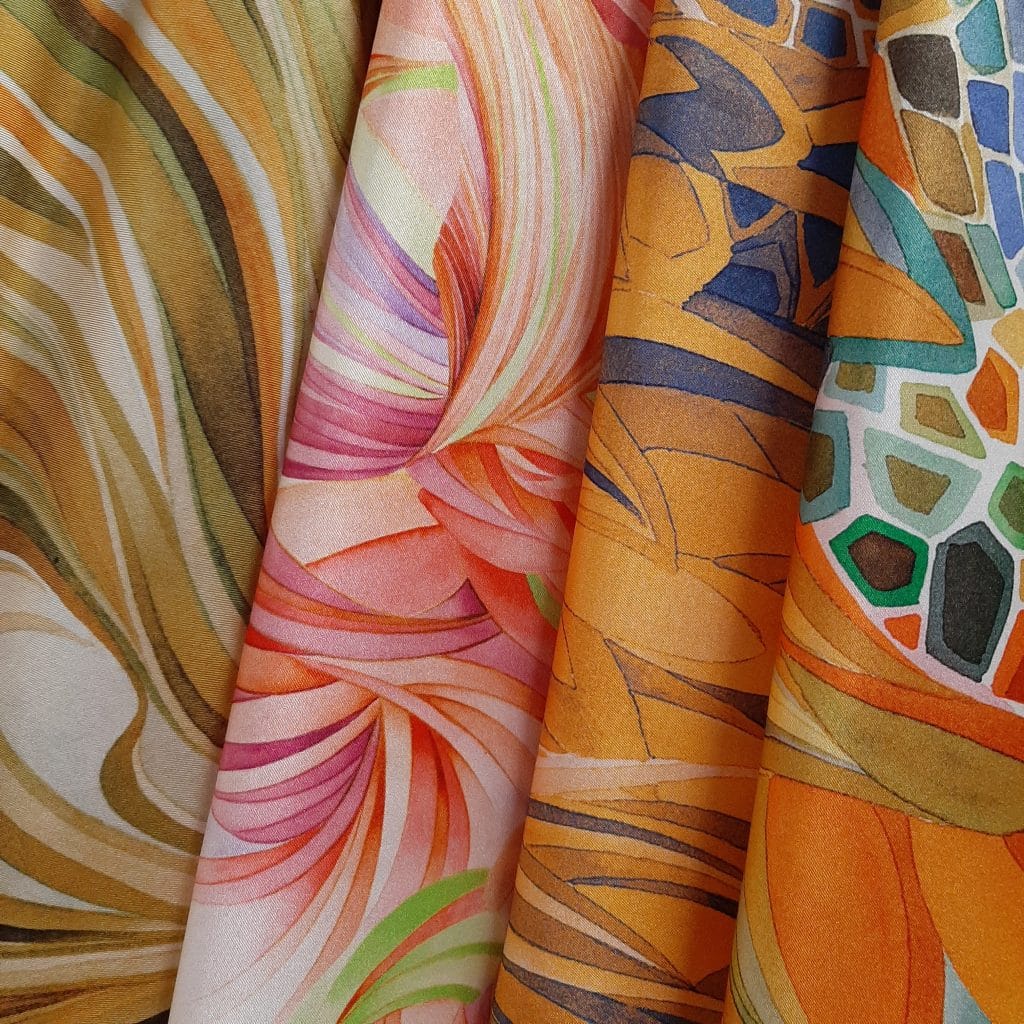According to legend, Chinese Empress Hsi Ling Shih was sipping tea under the shade of a mulberry tree laden with silkworms when a silkworm cocoon fell from the tree into her steaming cup. The woman watched in amazement as the cocoon took on the appearance of a skein in her tea. She grasps one end of it, unwinding a thread of infinite length.
The birth of silk seems to go back to the dawn of time, around three thousand years before Jesus Christ, on the basis of the inseparable link between the silkworm and its only food, mulberry leaves.
Processing of different silk fabrics
Silk processing involves several operations. The cocoons, once dried, are screened for their conservation according to their thickness, then sorted by hand by the workers according to their quality and their defects, before going to the spinning mills for treatment. This technique consists of maceration inside vats of water heated with steam, which makes the outer layer of the cocoon flexible.
The next step is unwinding, carried out with machines fitted with brushes so that the heads of the silk filaments are united according to their thickness, thus creating a single raw yarn which is twisted, washed and wound into skeins.
The type of silk fabric depends on the size of the thread, that is, its gauge, degree of twist and weave. It exists four fabric groups: the canvases or taffetas, diagonals, satins and jacquards. The strength of the fabric depends on the type of fiber. Organzine, for example, has a long, twisted and very strong fiber, while bourette, made from silk waste, has a short fiber and therefore very low resistance.
A silk fabric has a homogeneous structure, but has different characteristics in terms of softness, consistency, strength, thickness and heaviness. It all depends on the type of yarn used in the weft. The silk threads in the warp, on the other hand, determine the length of the fabric itself and are perpendicular to the silk threads in the weft.

Different silk qualities
Among the most used qualities of silk in the fashion world and sought after in the workshops of fashion designers, we find certainly satin, shantung and canvas. Satin has a matte look on the right side and a shiny look on the opposite side. Its weight per meter can vary from 250 grams to 400. It is ideal for making dresses and evening jackets, especially for women’s wardrobes. In the men’s field, satin is mainly used for the lapels of tuxedos and cummerbunds in combination with bow ties.
Shantung originates from a province in northern China, as if to pay homage to the country which, more than any other, has made silk weaving an art. Shantung is a rough-looking silk fabric characterized by knots which should not be regarded as a defect but as a quality. The weight per meter of the fabric varies from 250 to 500 grams; it is mainly used for making high value women’s clothing.
Silk canvas is a brighter fabric than satin and has a more even weft than shantung. It is very fresh and it is particularly suitable for the summer season. There is also a more battered version, therefore heavier, which takes the name of silk poplin. Its weight varies from 220 to 230 grams per meter and it is suitable for making jackets.
For more detailed information, please refer to the special article ” The ancient but still modern art of silk »De Ratti, today one of the main world players in the production of high-end fabrics and accessories.


–

